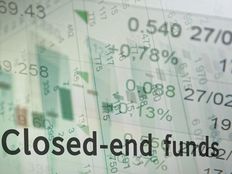2024 Investment-Grade Bond Market Strategy: Seizing Opportunities for Stable 9%+ Returns
In 2024, the investment-grade bond market presents a lucrative opportunity for savvy investors. Despite the widespread perception that the best times to enter the market might have passed, there’s substantial evidence to suggest that considerable gains are still within reach, especially through carefully selected closed-end funds (CEFs) that focus on corporate bonds.
Recent market dynamics have underscored the robust health of corporate bonds, marking an opportune moment for investment. Even the typically cautious analysis from outlets like Business Insider has shifted, recently acknowledging the unprecedented safety and attractiveness of corporate bonds. This positive outlook is mirrored by the surge in US corporate bond fund inflows, reaching new heights as investors transition from lower-yield alternatives to more substantial corporate bond investments.
The attraction is partly due to the impressive yields offered by several corporate bond-focused CEFs, with some yields exceeding 9%. These funds stand out not only for their high yields but also for their solid investment strategies, ensuring that these yields are well-supported by their underlying assets. The increase in bond yields, following interest rate hikes by the Federal Reserve, has not been accompanied by a proportionate rise in default rates, which remain low across the board. This stability is particularly pronounced in private credit and investment-grade corporate bonds, suggesting a relatively lower risk for investors in these categories.
A prime example of successful bond investment strategy can be seen in the performance of PTY, a fund that has consistently outperformed the broader market by carefully navigating interest rate changes and selecting high-performing assets. This approach has not only yielded superior returns but has also allowed PTY to maintain high distribution rates to its investors.
However, it’s crucial to note that not all bond funds have mirrored PTY’s aggressive strategy or its success. Funds like DHY and EVV, which adopt a more conservative approach with longer bond holdings, offer a different value proposition. These funds emphasize default avoidance and, as a result, have provided steady, though more modest, long-term returns. With the current shift towards higher-yielding bonds, such funds are well-positioned to offer more reliable dividends than seen in over a decade.
Currently, some funds like PTY command a significant premium due to their past performance, whereas others like DHY and EVV are available at discounts, making them particularly attractive for investors seeking value. These discounts not only enhance the yield on a net asset value (NAV) basis but also imply a potential for price appreciation, making them an appealing choice for those looking to capitalize on the current bond market dynamics.
Moreover, the prospective environment of falling interest rates, as indicated by recent statements from Jerome Powell, further bolsters the case for investment in these bonds. A reduction in rates would likely elevate the portfolio values of DHY and EVV, locking in their high yields and potentially leading to premium valuations similar to PTY’s. This scenario presents a strategic entry point for investors aiming to secure high returns before broader market recognition drives prices up.
In summary, the 2024 bond market offers a compelling opportunity for investors to secure stable, high-yield returns through strategic investments in corporate bond CEFs. By focusing on funds that offer substantial yields at a discount, investors can position themselves to benefit from both income and capital appreciation, tapping into the ongoing bond market boom with confidence.



